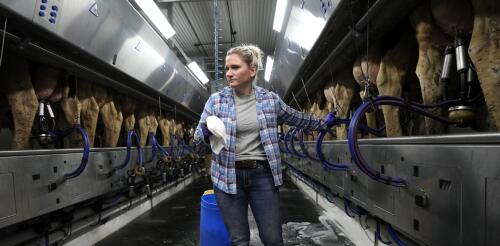Dairy cows
Colorado has highly pathogenic avian influenza – also known as HPAI or bird flu – on a dairy farm, the ninth state with confirmed cases. The U.S. Department of Agriculture’s National Veterinary Services Laboratories confirmed the virus on April 25, 2024, in a herd in northeast Colorado. This farm is one of 35 dairy farms across the U.S. with verified cases of bird flu in cattle as of May 7, 2024, according to the USDA. Bird flu is not new to Colorado. The state experienced an outbreak in poultry that began in 2022. Since then, the USDA’s Animal and Plant Health Inspection Service has reported that 6.3 million birds in nine commercial flocks and 25 backyard flocks have been affected by the virus. The most recent detection was in February 2024. But this is the first time the disease has made cattle in Colorado sick. I’m a veterinarian and epidemiologist at Colorado State University who focuses on infectious diseases in dairy cows. I spent many years...
The discovery of fragments of avian flu virus in milk sold in U.S. stores, including in about 20% of samples in initial testing across the country, suggests that the H5N1 virus may be more widespread in dairy cattle than previously realized. The Food and Drug Administration, which announced the early results from its nationally representative sampling on April 25, 2024, was quick to stress that it believes the commercial milk supply is safe. The FDA said initial tests did not detect any live, infectious virus. However, highly pathogenic avian influenza virus can make cows sick, and the flu virus’s presence in herds in several states and new federal restrictions on the movement of dairy cows between states are putting economic pressure on farmers. Five experts in infectious diseases in cattle from the University of California, Davis – Noelia Silva del Rio, Terry Lehenbauer, Richard Pereira, Robert Moeller and Todd Cornish – explain what the test results mean, ho...
Milton Orr looked across the rolling hills in northeast Tennessee. “I remember when we had over 1,000 dairy farms in this county. Now we have less than 40,” Orr, an agriculture adviser for Greene County, Tennessee, told me with a tinge of sadness. That was six years ago. Today, only 14 dairy farms remain in Greene County, and there are only 125 dairy farms in all of Tennessee. Across the country, the dairy industry is seeing the same trend: In 1970, over 648,000 U.S. dairy farms milked cattle. By 2022, only 24,470 dairy farms were in operation. While the number of dairy farms has fallen, the average herd size – the number of cows per farm – has been rising. Today, more than 60% of all milk production occurs on farms with more than 2,500 cows. Dairy farm numbers have fallen over the past few decades, but larger farms have kept the overall number of cows fairly steady. USDA Thi...


